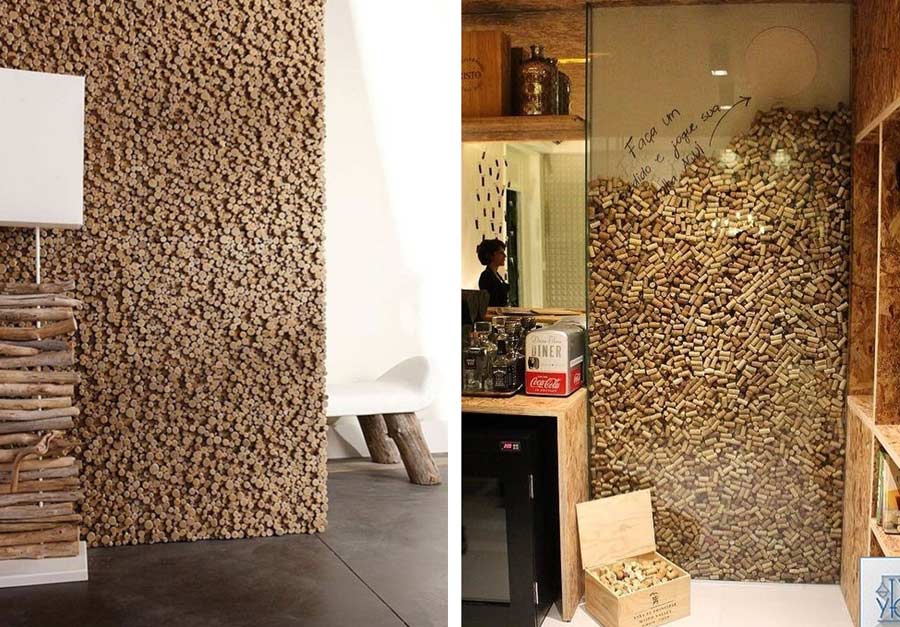Materials:
- adhesive
- velcro-type fixing system
- a thin sheet of aluminum or a thin wooden board
Instructions:
If you want to insulate your house from the inside and save energy, follow these instructions:
- Cut the aluminum sheets or wooden boards with the desired shapes and size. They can be all the same or in different shapes to create original combinations.
- Depending on the final design, cut the corks with different sizes, so that some are longer than others, or just in the same size.
- Glue the corks to aluminum or wood, both vertically and horizontally, combining the different sizes.
- Glue the aluminum or wood base (with the corks previously attached) to the wall with the help of the velcro system.
From now on, you no longer have an excuse for not opening a bottle of wine….Or two!

